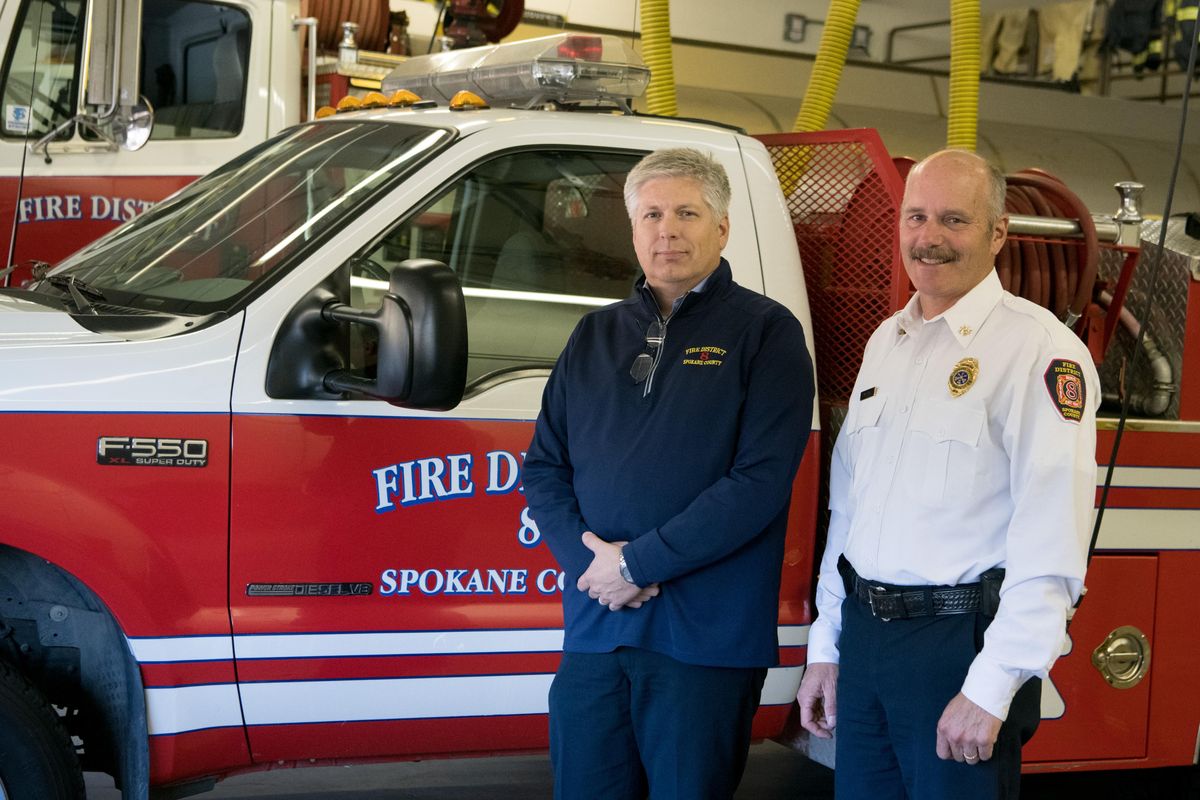Fire District 8 chiefs join chiefs across nation to share wildland firefighting strategies

Spokane County Fire District 8 was one of five districts in the country to be selected to attend a Fire Department Exchange event hosted by the International Association of Fire Chiefs earlier this month.
The districts gathered to discuss fighting wildland fires, which firefighters are battling with what seems like increasing frequency. “It’s really just an exchange of ideas,” said Fire Chief Tony Nielsen.
Division Chiefs Marty Long and Tom Hatley attended the session in Boise. Other agencies in attendance hailed from Texas, Colorado, California and South Carolina.
“We got to see some of the stuff they’ve been working on,” Long said. “It was real world learning what they’ve been doing on wildfire mitigation. Every area in the country, they have their own wildland urban interface.”
Long was particularly inspired by a program run by the Colorado Springs Fire Department, which actively goes out in the community and does fuel reduction work. Fire District 8 currently has a yard debris collection day every spring to help landowners keep their property free of debris.
“Maybe the next steps for us are to go out to them,” he said.
Long said his discussion about District 8’s Ember Aware program was well received by the other firefighters. The program focuses on how homeowners can prepare ahead of time to make their home able to defend itself from the blowing embers that often help spread wildfires.
The Ember Aware program was created in 2015, a year with many wildfires in the area, Long said. It emphasizes creating a noncombustible zone within a 5-foot barrier around a home’s foundation, as well as using appropriate building materials.
A homeowner can request an evaluation of their home by the district and firefighters use a form they created to indicate what areas need work. Items on the form in roofing materials, the condition of vents and soffits, siding materials and whether fences are attached to the home.
“We developed that form here just out of necessity,” Long said.
Each district that participated in the exchange was asked to come up with three objectives to improve their wildland urban interface, he said.
Long said he wants to encourage creating a fire-wise community and promote defensible space assessments. Those two may lead to fuel mitigation programs like the one in Colorado Springs, he said. A collaborative team needs to be formed with other districts, the Department of Natural Resources and other agencies to help address the issue, he said.
“One of the goals is to promote community risk reduction, try to prevent fires and other incidents before they happen,” said Nielsen.
Long said he also wants to focus on educating the public on the fire evacuation levels, including what they mean and how to receive them. Level one means that people should be aware of a nearby fire, level two means people should prepare to leave and a level three evacuation means people need to leave immediately.
“I will never be out of a job when it comes to fire education,” Long said. “It’s just one ongoing effort all the time.”
Nielsen said he’s not quite sure why his district was selected to participate in the exchange but he’s glad it was. Usually he is only able to “collaborate and commiserate” with local fire chiefs at regional meetings, he said.
“I’ve never seen anything like that,” he said. “I thought it was so cool. You learn so much. We should do it more often.”